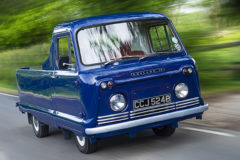Bulawayo Railway Museum
Posted by Chris Graham on 13th July 2020
Chris Kapolka visits The Bulawayo Railway Museum, established in 1972, which recognises the importance of Cecil Rhodes’ railway-building initiative in Central Africa.
Photography: Chris Kapolka, unless stated
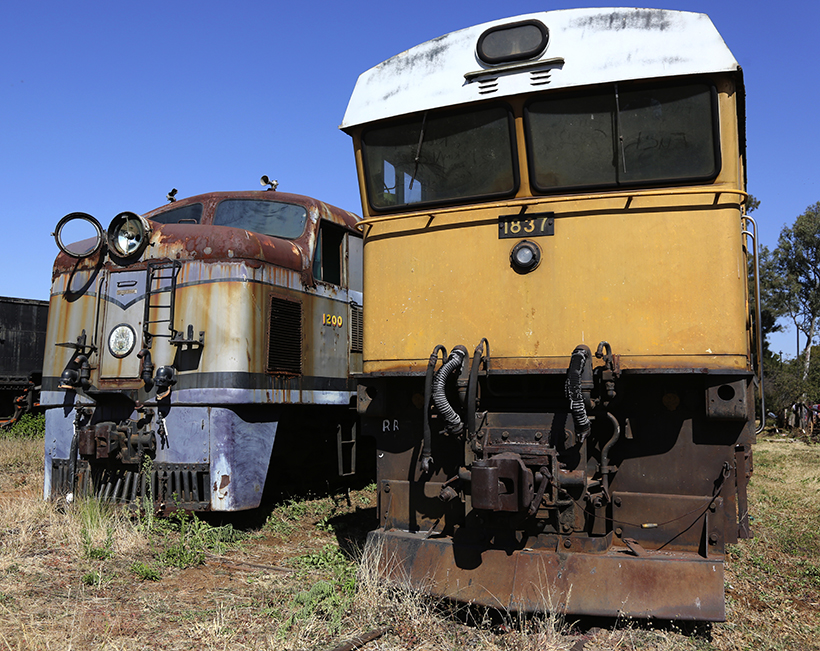
Bulawayo Railway Museum: This Rhodesian Railways DE-class No 1200 (left) was an early, English Electric Co-built diesel loco with very American styling. Built for lines in the eastern part of the country far from the coal reserves of Wankie, these were a real success story and out-performed all the steam locomotives on the tortuous routes. Delivered in the mid-1950s, the last of these 1Co-Co1 class was withdrawn in 1997, and seven of the class had clocked 2.5 million miles over the 40 years. No 1837 (right) sneaked into Rhodesia during sanctions, when Ian Smith’s government broke ties with Britain and the Commonwealth to become an independent, sovereign state. This class of 35 diesels were built in West Germany, by Arnold Jung Lokomotivfabrik GmbH, and delivered in kit form.
Bulawayo Railway Museum is just a short walk from the city’s station, and offers a wonderful, historical insight into the railway and its development. With rather more amenable climate conditions than is regular in Britain, this museum is very much an outdoor concern. However, some of its prized artefacts are housed under cover, to protect them from the unforgiving sun.
The museum’s entrance is through a small, colonial station building, of the sort once typically seen peppering the line between Mafeking and the Congo. It’s a wooden-framed structure, clad with corrugated iron sheeting. A central doorway provides access to two offices, then on to the trains.
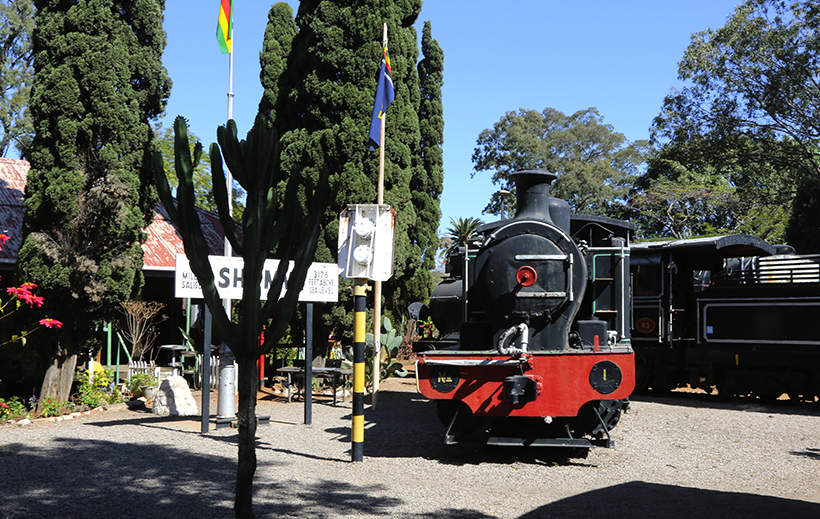
The first view to greet visitors inside the museum, is of loco No 1 Rhodesia plinthed on track. It was built by Hudswell Clarke & Co in 1929, for service at Beira Docks, to take over from loco Jack Tar. Its wheelbase proved too long for the tight curves in the docks, so No 1 and her twin sister were put in storage for 12 years, before being sent inland for shunting work in freight yards. Behind No 1 sits loco No 43.
The ticket office remains as such, and the former goods office now houses artefacts and items for sale. Gently-spoken curator, Gordon Murray, with his infinite knowledge of railways, is the perfect host to visitors, making them incredibly welcome. He’s accumulated a lifetime’s passion for saving the railway heritage in this part of Africa.
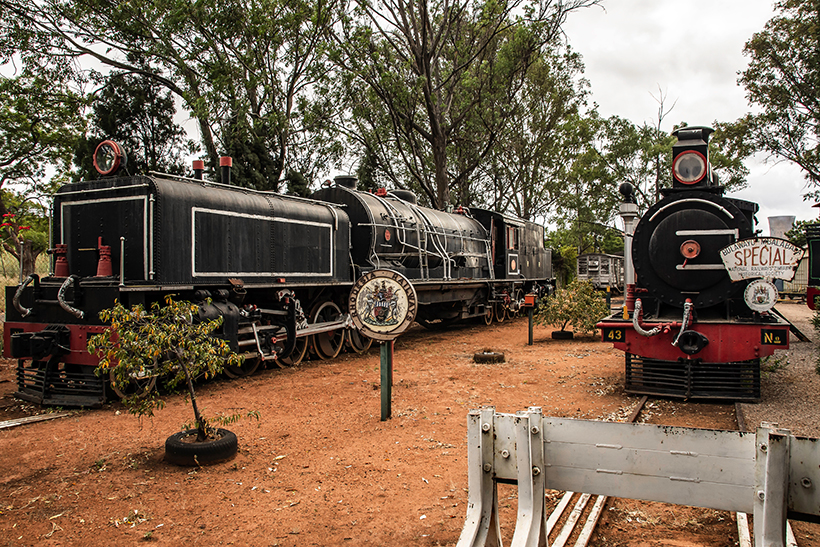
This Beyer-Garratt 16th class 2-8-2 + 2-8-2 No 600 was built in 1929 and was, at the time, the biggest locomotive on Rhodesian Railways. Its original number was 221. (Pic: Dave Howlitt)
Haven of tranquillity
With your entrance ticket in hand, you step into a natural haven of tranquillity, where railwayana sits comfortably in a beautifully-tended garden. The seats on the platform just entice you to sit and absorb the ambience of the botanic setting and contemplate, even before wandering through the museum. The station building itself has been moved several times in its history, although its original location is unknown.
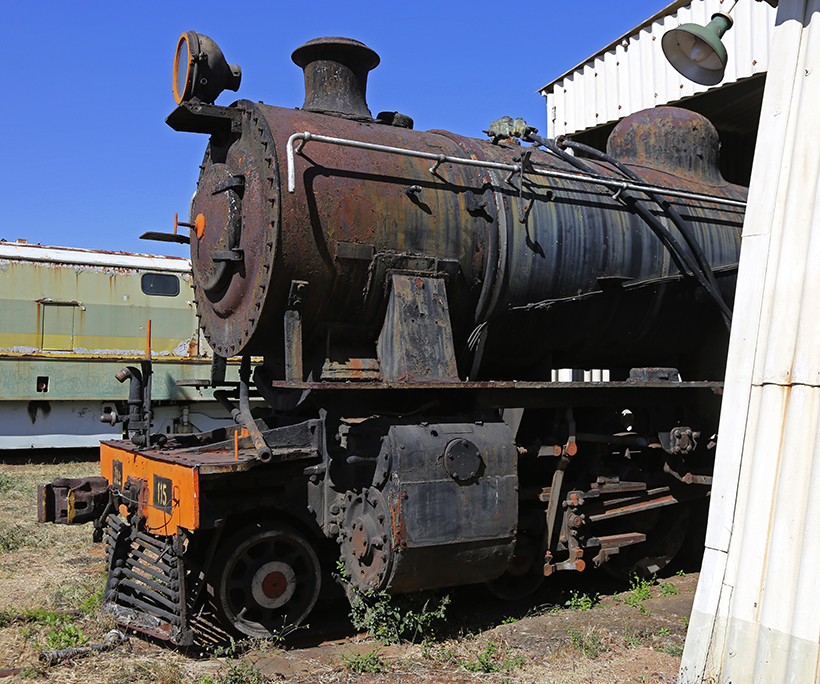
Loco No 115 is a 9th class 4-8-0, built in 1917 by the North British Locomotive Co, in Glasgow. These were popular locos, but also struggled with the gradients on the Umtali Line. Restored to working order in 1984, and used in the NRZ centenary celebrations in 1997, she clocked-up 1,084,919 miles in service; the equivalent of two, return trips to the moon.
In a game of ‘musical stations’, it was Kildonan station in 1930 and then, in 1931, it moved to Shamva where it remained until being dismantled and transported to Bulawayo. It just sits so comfortably at this final location, and the canopy gives visitors a refreshing place to sit in the shade.
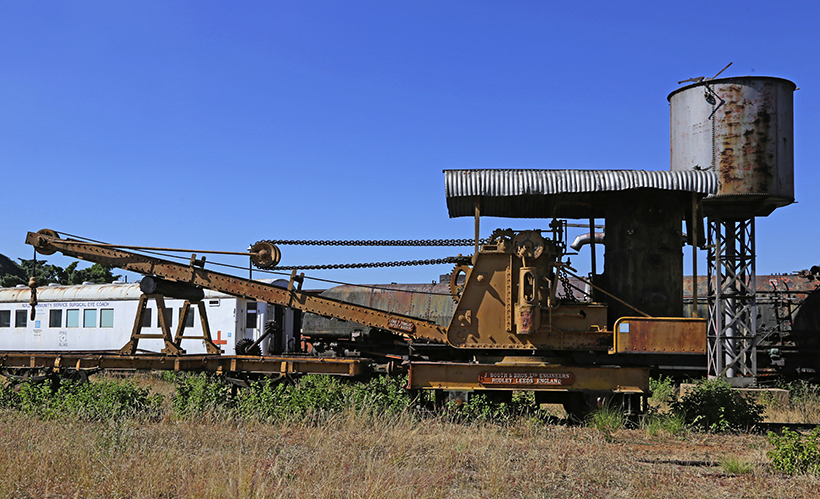
This is a J Booth & Brothers-built, crane with a l7-ton lifting capacity. It was acquired from the Leeds manufacturer in 1913, to work at Beira Docks.
Dominant, in the garden setting, are the striking red leaves of the Poinsettia plant (Euphorbia Pulcherrima) which, ironically, isn’t native to Africa, but indigenous to the Central Americas. Crunching down the various walkways leads visitors on a voyage of discovery – almost like entering a little, secret world.

Only six American locomotives ever worked on Rhodesian Railways. These 4-8-0s were built by ALCO in 1917, because of the difficulties facing British manufacturers due to the war effort during WW1. But they proved unsuccessful, and ended up as shunters. Here, a 9A-class loco 122 basks in the winter sunshine.
The Main Hall building was the original refrigeration plant and wiring works, where refrigerated wagons were overhauled and electrical motors were rewound. The framework of the building was created from expired lengths of railway track, and even shows the manufacturer’s name and date of casting.
Rolling stock
The first locomotive to arrive at the museum was a classic ‘old timer’ – loco No 43, of the 7th class. This 4-8-0 tender loco was built at the North British locomotive works in 1903, at a cost of £3,153. When retired, in 1964, it had clocked-up 1,120,750 miles.
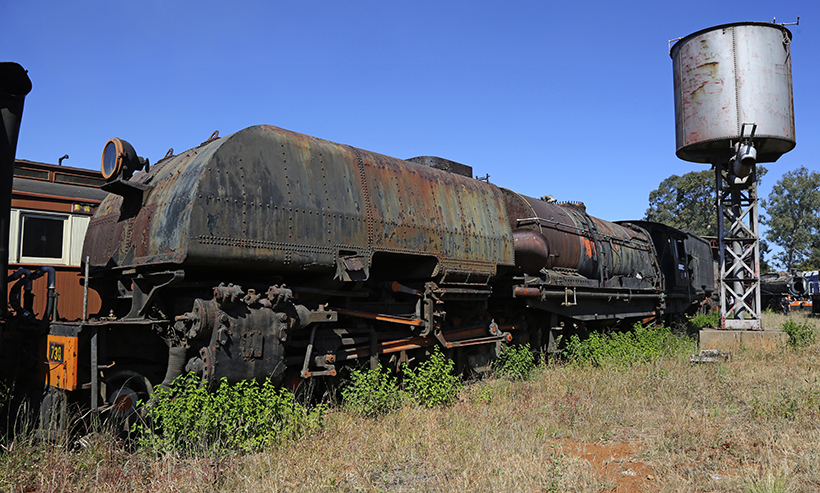
This 20A-class 4-8-2 + 2-8-4 Beyer-Garratt weighs in at 225 tons. Built in 1957, at a cost of £76,000, loco 730 had clocked-up 1,349,868 miles when it was retired. It was last steamed in 2004.
The opening of the museum on November 4th, 1972, celebrated the 75th anniversary of the opening of the Vryburg-to-Bulawayo railway line. No 43 was driven into the new museum by the then Minister of Transport, Mr RTR Hawkins, towing the museum coach, Cecil Rhodes’s coach and a guard’s van. Since then, the museum has expanded considerably, and has become one of Bulawayo’s most popular tourist attractions.
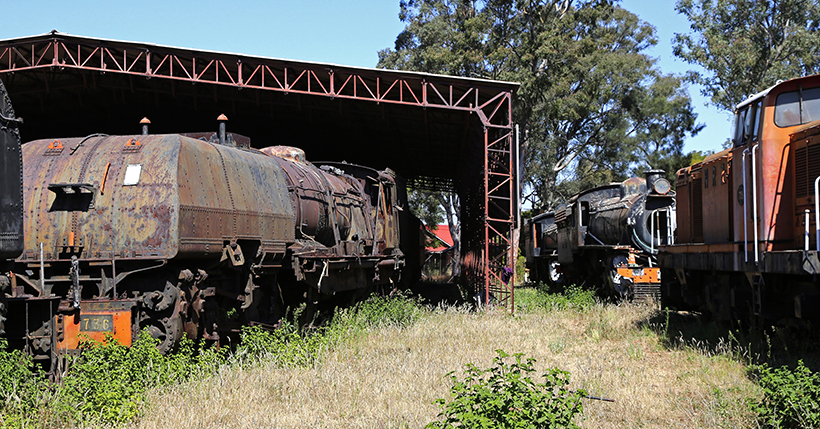
Famed railway author and photographer, AE ‘Dusty’ Durrant, bought this 20A-class Beyer Garratt No 736, and bequethed it to the museum in his will.
Regarded as the centre-piece of the museum is a little, green 0-6-0T loco, with the name Jack Tar. Built in 1889 by Manning Wardle & Co of Leeds, it was used by contractors to build part of the Midland Railway’s line between Dore and Chinley – now known as the Hope Valley line. It was then re-gauged to 3ft 6in and sent to Africa, eventually becoming loco MR7 on the Mashonland Railway. Thereupon it was sent inland to work as a ballast loco on the construction of the railway to Northern Rhodesia, via the Victoria Falls.
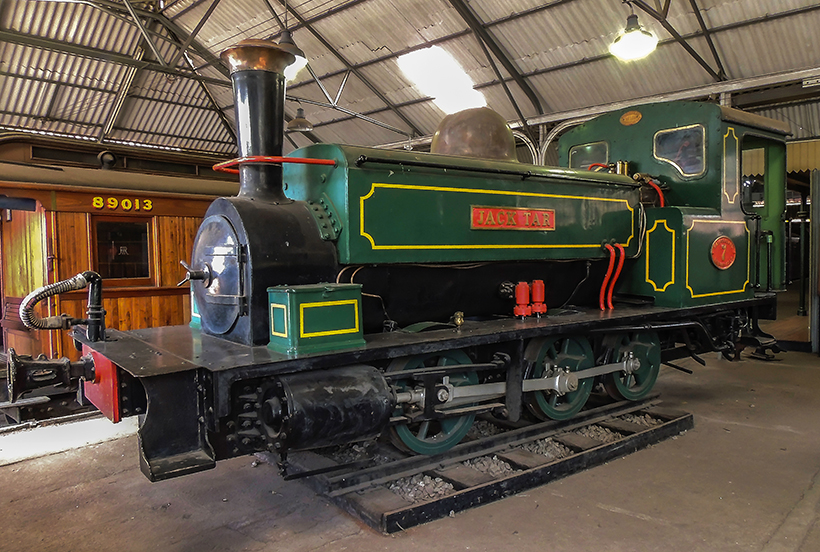
This is the tiny loco, Jack Tar, that first crossed the Zambezi on the Blondin Cable in parts, and was reassembled to famously become the first locomotive to work over Victoria Falls Bridge with a train of two ballast wagons. (Pic: Dave Howlitt)
Historic loco
This little loco was then dismantled and sent across the Zambezi over the Blondin Cable in kit form, then reassembled. It became the first locomotive to work in Northern Rhodesia, then the first to work over the newly-constructed Victoria Falls Bridge. The museum now contains some 17 steam locomotives – including the mighty 20A-class Beyer-Garratts – and a selection of eight diesels, including one of the ‘sanction busters’ that, in reality, proved far too complex to keep operational.
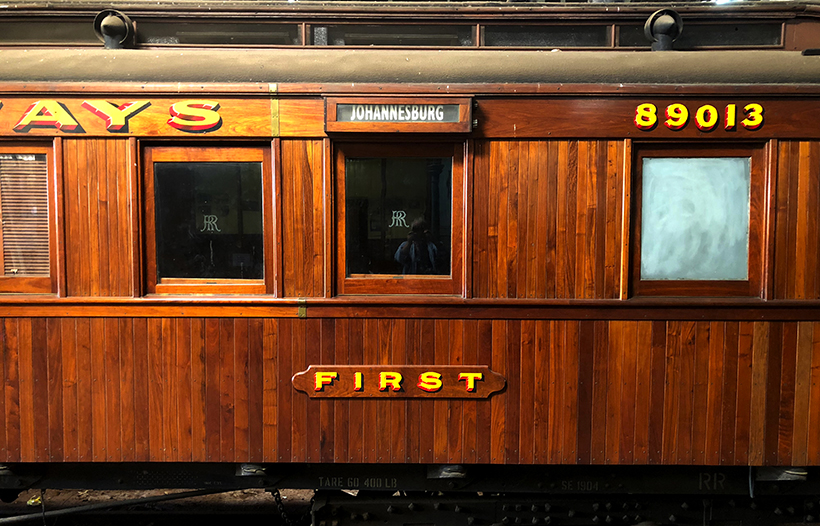
The museum coach is one of the oldest-surviving coaches of Rhodesian Railways, and dates from 1904. It was built in England, at the Metropolitan Amalgamated Carriage Works.
However, this museum is much more than just a collection of locomotives. Historic coaches are also represented, and various displays relate to the theme of railway construction. Anyone contemplating a visit would be well advised to acquire a copy of the museum’s guidebook, which is a brilliantly informative, easy-read guide to the collection.

In his office, cluttered with all kinds of transport memorabilia, this is Gordon Murray, the enthusiastic curator of the Bulawayo Railway Museum. Born in what was then Rhodesia, he has spent a lifetime working on Zimbabwe Railways.
Bulawayo, Zimbabwe.
June 2018. © David Hill.
For those aiming for photography, the morning or late afternoon light is best, as the sun at midday produces very harsh shadows. Trip Advisor gives the museum a 4.5-star rating, which speaks volumes. This really is one of the nicest and most enlightening museums around, considering it exists in a nation that struggled so much with corruption and mismanagement.
For a money-saving subscription to Old Glory magazine, simply click here



